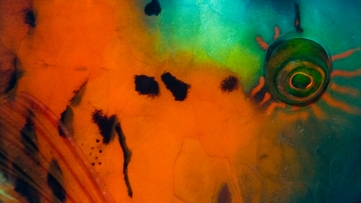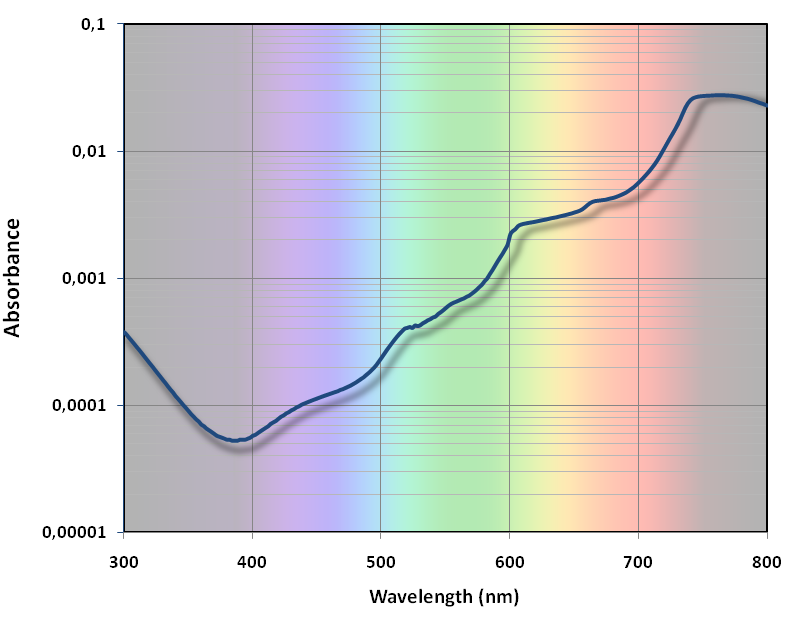
| Home |
| Colors of the Reef |
| Search the Reef |
| Science and the Reef |
| Equipment |
| New |
| Links |
| Contact |
| Interna |
Why do the Colors Disappear when Diving?
Even the clearest water absorbs visible light, although this absorption is very weak. The maximum of this absorption lies in the red at about 740 nm, but is tailing far to the blue region of the spectrum. Figure 1 shows the absorbance of water for ultraviolet and visible light. The lowest absorbance is found in the blue region around 400 nm, for light of this color water is much more transparent than for red light above 650 nm.
This becomes more clear in Figure 2, where the transmittance of water is plotted for several distances in water. As you can see, even a water column of 1 m absorbs more than 20% of the red light above 650 nm. A water column of 10 m transmit less than 10% red light, and this is the reason why first red and later orange an yellow light disappear even in quite shallow water. This becomes a big problem in underwater photography. Without external flashes all pictures have a blue and green color cast. And since the light of the flash has to travel twice the distance - from the flash to the object and then reflected back to the camera - it helps only for short distances. This is the reason why macro pictures look much more colorful than pictures taken from distant objects underwater.
The situation is entirely different for blue light. Even a 10 m water column transmits 90% of blue light at 400 nm. Thus, on a sunny day in clear water the amount of light is enough for taking pictures in moderate depths - the lack of red is the problem. This can partially be solved by changing the white balance of the camera so that the red is enhanced. In addition a red filter can be used which suppresses the blue part of the spectrum. The filter basically allows longer exposure times to increase capturing the red while not overexposing (due to the limited dynamic range of film materials or digital sensors) the blue. However, all these tricks don't help if the transmittance of red approaches zero and thus no red light reaches the camera.
Figure 1. Absorbance of water as a function of the wavelength of light between 300 and 800 nm. Below 400 nm is ultraviolet light (UV), above 800 nm infrared (IR). Please note the logarithmic scale for the absorbance, each main division means an increase of the absorbance by a factor of 10. Raw data taken from H. Buiteveld, J. M. H. Hakvoort, M. Donze, "The optical properties of pure water," in SPIE Proceedings on Ocean Optics XII, edited by J. S. Jaffe, 2258, 174-183, (1994) |
Figure 2. Transmittance of water for water columns of 1, 3, 5, 10, and 20 m. The tran-smittance is the fraction of light at a given color (wavelength) that passes the water column. E. g. a transmittance of 60% for 500 nm light and a 20 m water column means that 60% of the light is transmitted and 40% is absorbed by water. The data are taken from the same source than Figure 1. |



